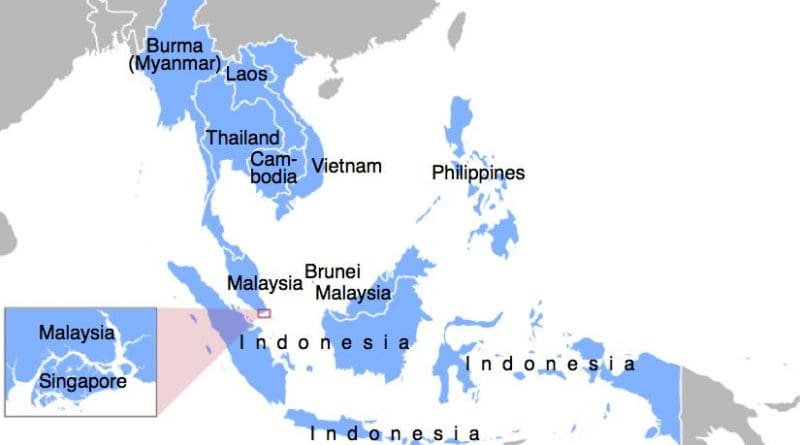The EU’s Mixed Strategy For SE Asia – Analysis
By Fraser Cameron
The EU’s mixed strategy towards SE Asia, supporting the association of south-east Asian nations (ASEAN) while pursuing bilateral agreements, is showing results. The EU has proposed an ambitious menu of support for the ten-member ASEAN and its new ASEAN Economic Community, and offered to develop its relations into a strategic partnership. An ASEAN response is expected before the EU-ASEAN ministerial in mid-October in Thailand. The EU is the main provider of financial and technical assistance to ASEAN. Its trade and investment with the 600m strong bloc is booming with a strong emphasis on infrastructure projects, or connectivity in the jargon.
As regards the individual countries of the region the EU is pursuing a mix of free trade agreements (FTAs) and partnership and cooperation agreements (PCAs). The first PCA/FTA was with Singapore, the most advanced economy in SE Asia, but it was sent to the European Court after completion for a ruling on EU competences. A judgement is expected shortly.
A PCA and FTA have been agreed with Vietnam and the ratification process is underway. Vietnam is one of the most dynamic economies in the region and European business is confident of finding new opportunities there.
With the largest country, Indonesia, there is an agreement to launch FTA talks but due to local sensitivities the process is called the comprehensive economic partnership agreement (CEPA). President Jokowi’s visit to the EU earlier this year has given a fillip to the bilateral relationship as has the good relations between Federica Mogherini and her Indonesian counterpart. There are an impressive number of dialogues covering security issues, the environment and human rights.
As regards Thailand the PCA has been signed but ratification will have to await the restoration of democracy in the country. The EU has also been reluctant to move forward on an FTA for the same reasons. There is also a freeze on ministerial-level visits to the country as long as the military remain in power. At the same time the EU has pushed Thailand to introduce substantial reforms to its fishing industry for fear of having its seafood exports banned from the lucrative EU market
With Malaysia the PCA has been signed but the FTA negotiations have been blocked for internal reasons.
Negotiations with the Philippines on a PCA and FTA are under way after some years of hesitation on the part of Manila.
Relations with Brunei remain strained due to the country’s introduction of Sharia law. Talks on a PCA are at an advanced stage but unlikely to be ratified because of the Sharia law impact.
A new strategy paper on Myanmar has just been released by the EU that charts a road map for future cooperation. Mogherini plans to visit Myanmar after the ASEM summit in mid-July.
There is little substance to the EU’s relations with Lao and Cambodia, partly because both countries lean heavily towards China. Both receive considerable development assistance but political and trade relations are limited.
Despite the EU’s disapproval of the political situation in Thailand this has not affected the EU’s overall relations with ASEAN. Indeed the EU is looking to support sub-regional cooperation via projects such as the Lower Mekong initiative.
Overall the EU’s mixed strategy towards SE Asia is the right approach. A region to region FTA would not make sense just now given the huge economic differences between the countries. Pursuing bilateral relationships also gives the EU the flexibility to reward the most progressive countries and promote its own interests.

